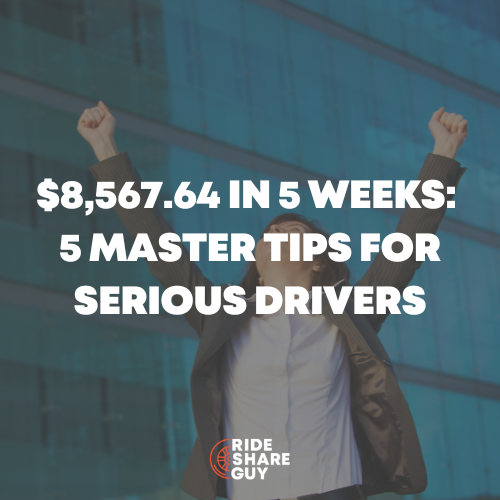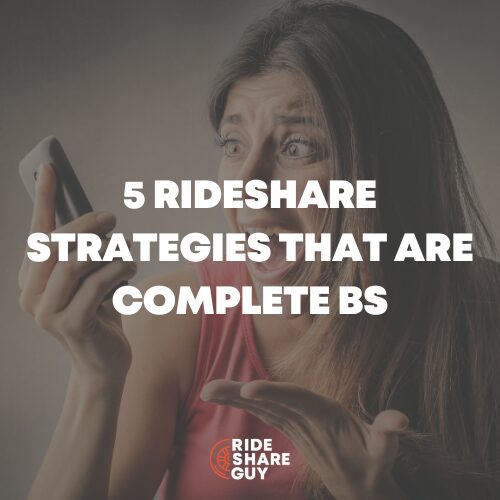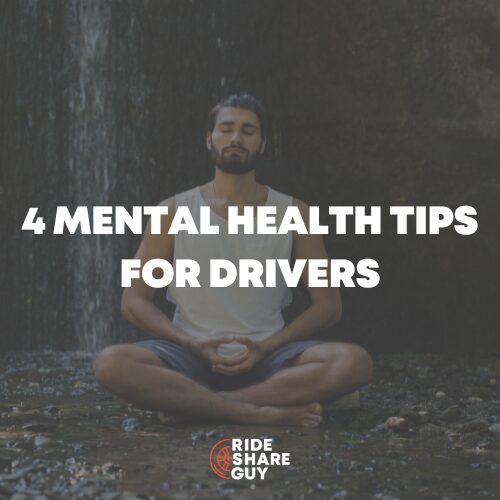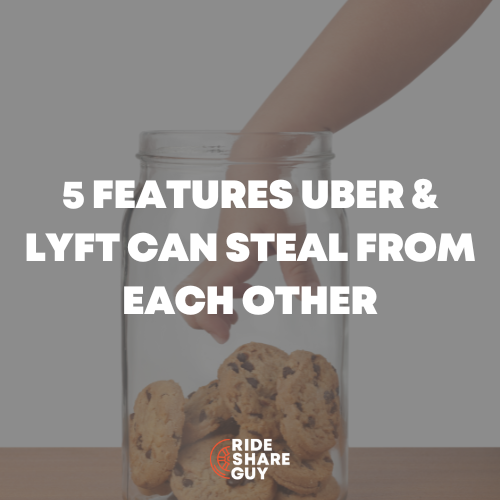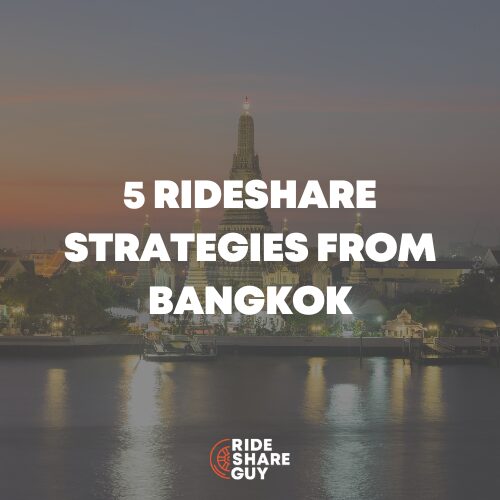I had not driven for Uber or Lyft since mid-March.
Over the 4th of July holiday weekend this year, I drove for four mornings in a row. I planned to drive for five days, but my lower back seized up.
Now I remember why I stopped driving. My body can’t handle it anymore. Ahh, well. Lesson learned—again!
While I kept my finger on the market’s pulse by reading all the RSG articles, watching RSG YouTube videos, and occasionally tuning into the Show Me The Money Club weekly YouTube show, I had no idea how much the job had changed.
In this article, I will share the five significant changes I experienced and my strategies to adjust to these changes.

Background
I look back at my four-year run as a full-time driver in San Francisco from 2016 to 2019. Even though I complained from time to time, I knew that I had a good deal.
$500 weekly bonuses, no downtime, and a Toyota Prius rental for $147 a week, which included insurance and unlimited mileage.
Making $2,000 a week was easy. Now, times have changed.
Since the beginning of 2024, the driver environment has dramatically shifted in the Sacramento market and probably in your market as well. I was surprised by how much time I spent waiting for a ping. I don’t like waiting. So, let’s jump into this and explore our options.

Too Many Drivers
With more people out of work and more people wanting flexible work, the rideshare driver pool has grown and continues to expand.
Strategy – Nothing you can do.
The first significant change is the sheer number of drivers on the road. Maintaining a steady income stream can be challenging, with more drivers competing for rides. Unfortunately, there is not much you can do about the oversaturation of drivers.
The key is to focus on what you can control and adapt your strategies accordingly.
Hardly Any Bonuses
Zero, nada, zilch. I did not have one incentive from Uber or Lyft for the entire 4th of July weekend.
Strategy – Be patient.
The second change is the reduction in bonus offerings. Where once I could count on regular bonuses to boost my income, these have become scarce. My strategy now is to be patient.
Occasionally, companies will still offer bonuses, and taking advantage of these opportunities is essential when they arise.
However, they can no longer be relied upon as a consistent source of income. Last year, I could make an extra $100 over the weekend from Uber’s bonus. Now it is gone.

Drivers Are Waking Up Earlier
I was surprised to see Uber and Lyft drivers in my hometown of Roseville at 3:15 AM. People have been taking my advice and capturing the early morning passengers.
Strategy—Drive while you have demand.
With more drivers on the road, many are starting their shifts earlier to capture the morning demand. My strategy is to drive during peak demand hours and then stop to do something else when demand drops.
This helps maximize the time spent driving passengers and reduce idle time. It’s important not to depend solely on driving all day but to diversify your time and activities.
I found that I was busy at 3 AM. I could keep driving without much downtime until 7 AM. From 7 to 8 AM, I started to get more downtime. This is when I stopped driving.
One Company Alone Won’t Do It
I met two drivers. One drove only for Uber, and one drove only for Lyft. It makes sense to drive for only one company if you are in an area where one company can keep you busy 100% of the time. That is NOT the case anymore.
Strategy – Sign up for all the companies you can.
Given the changes in the industry, it is no longer viable to depend on just one rideshare company. My strategy now is to sign up for as many companies as possible. This increases the chances of getting consistent rides and ensures you are not putting all your eggs in one basket.
Diversifying your driving platforms can help stabilize your income. My rides that weekend were split 70% by Uber and 30% by Lyft. Uber seemed to keep me busy, and their per-hour revenue figures were higher.
However, when I did not have an Uber ping, I fired up Lyft, and often, the next ping was Lyft. Lyft filled in the gaps and was essential for achieving my high revenue figure.
Confusing Upfront Fares
Now that Uber and Lyft tell you how much you will make, how do you pick one side over the other? I did not have this problem that weekend because I was not all that busy. Rarely did I get multiple pings from which to choose.
Strategy: Take what you can get.
The final change is the confusion surrounding upfront fares. Due to varying fare structures and inaccurate mileage estimates, predicting how much you will make from each ride can be challenging.
My strategy is to take what you can get. Rather than analyzing and second-guessing each fare, accepting rides and keeping moving is more productive in a slow market. Consistency and volume are essential in this new environment.

Key Takeaways
The rideshare industry has undergone significant changes in a short period. While numerous strategies exist to cope with these shifts, the most reliable way to maintain your revenue goals is to work the necessary hours.
By driving more hours, staying adaptable, and diversifying your approach, you can continue to succeed despite the challenges.
Focus on maximizing your driving hours during high-demand segments of the day, and you will be able to navigate the evolving landscape of rideshare driving.
